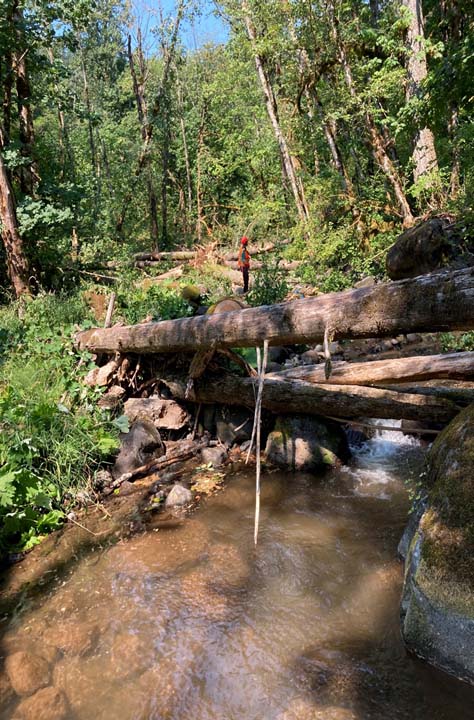Woodard Creek, a Columbia River tributary in Skamania County, is on its way to improved habitat. Woodard Creek is a salmon-bearing stream, but over the past century it has been affected by road development, wildfire and timber harvest. The Upper Woodard Creek Restoration Project is improving a one mile stretch of the creek north of State Route 14 by adding large wood to the stream and revegetating along its banks.

In mid-August, crews worked to place 220 pieces of large wood in the creek. Because of the location and terrain around the project site, the team hired Columbia Helicopters to move the wood to its new location. See a short video of the helicopter in action. The strategically placed wood will increase habitat complexity, encourage formation of pools, and trap sediment to improve the creek and side channel conditions for salmon, steelhead, lamprey and resident trout.
Before the helicopters could fly the large wood to be placed in the stream, trees had to be selected and felled in a nearby upland site. This thinning is beneficial to the forest because it allows remaining trees to have more room to grow. The US Forest Service assisted with tree selection, and the felling was done by Jay Holtmann, Inc. In addition to those logs and rootwads that were helicoptered in, professional arborist Anthony Gomez from Tree Care Cascadia hand-felled wood into the creek, and additional wood was transported to the site by truck by Mike Green of Timberman, Inc.
Over the winter, contractors will revegetate 15 acres along a one mile stretch of the creek with a selection of native conifers, which will help shade the stream and eventually add to the large wood in the stream.
The Upper Woodard Creek Restoration Project is a partnership between the US Forest Service, Columbia River Gorge National Scenic Area and the Estuary Partnership. This project adds to previous habitat enhancement work completed by the Lower Columbia Fish Enhancement Group along the lowest stretch of the river. This project is funded by the State of Washington Recreation and Conservation Office, Salmon Recovery Funding.